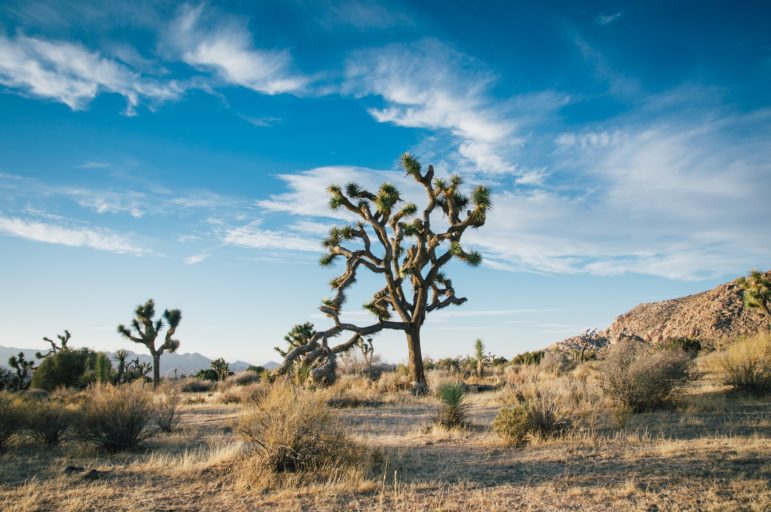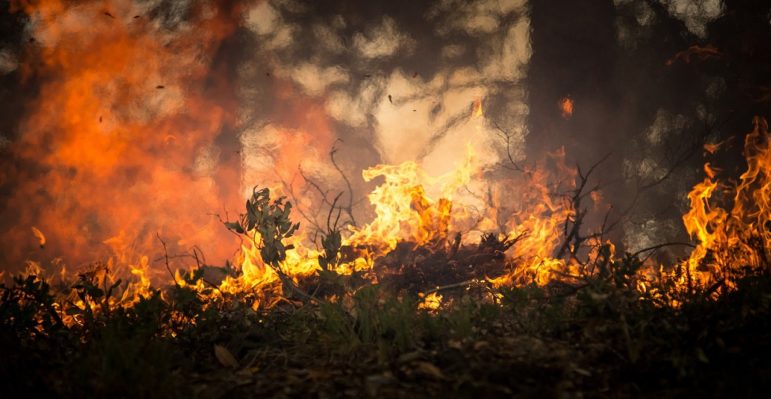
The desert plays an outsize role in my dreams. I have only spent a few days of my life in those arid environments, but they left such an impression that when I close my eyes I see the rocks and the cracked earth again in perfect clarity. My father took me on a trip out to the American west during my teenage years, and I recall driving into Arches National Park in Utah.
We arrived in the middle of the night, the lights of our van illuminating the brick-red rock of the sandstone arcs for which the park is named. We had Television’s Marquee Moon playing on the radio, and I looked up to see more stars hanging above me than I thought possible, stars enough to drown in. Look here, junior, sang Tom Verlaine, don’t you be so happy. We stopped the van and got out, and I stared into that magnificent field of darkness pricked with light, and I could say nothing at all about it. And for heaven’s sake, the song continued, don’t you be so sad.
I had the sense even then, half my lifetime ago, that a place like that was not a place meant for more than a swift visit. Those desert parks I visited, Arches and others – Canyonlands, the Petrified Forest, Bryce’s Canyon – struck me as places meant only for brief pilgrimages, places meant for interlopers like myself to visit, pay respects, and leave again without inflicting any more damage than had already been done in our names.
This was a reasonable conclusion to reach: it was informed not only by my parents’ Paganism, but by the legal framework that surrounded those parks, the Wilderness Act of 1963, which famously defined the wilderness: “in contrast with those areas where man and his works dominate the landscape, [wilderness] is hereby recognized as an area where the earth and its community of life are untrammeled by man, where man himself is a visitor who does not remain.” The Wilderness Act defined the U.S. federal government as having the duty to protect those wild places (even as the government, by necessity, reshaped and reconstructed those landscapes into their current forms.)

[Pixabay.]
I’ve never been to Joshua Tree National Park; I’ve only seen the photographs of that place and its otherworldly trees, their bark hanging down like shaggy fur and their leaves thrusting outward like spear-points. And, like many, I have looked in horror at the descriptions of how Joshua Tree National Park suffered during the recent U.S. federal government shutdown. Brittany Martin, writing for LA Magazine, describes some of the effects:
By the time the shutdown finally ended, a National Park Service survey of the damage found Joshua Trees chopped down and left on the ground, vandalism to rocks, the cutting open of chains and locks used to close the campgrounds, and the discovery that people coming into the park had driven off-road so extensively that two new vehicle pathways were cut through previously pristine desert areas.
The Joshua trees themselves are a long-lived variety, capable of surviving for centuries; however, they can also take many years to reach maturity, reaching only 45 inches in height over the course of their first twenty years. The great Joshua trees of the national park have taken, in some cases, more than a century to grow.
A deeper irony still is that our institutional approach to preserving and maintaining the landscapes Americans call “wilderness” is that they create the conditions by which the wilderness is destroyed. (Martin notes that the number of visitors to Joshua Tree National Park has roughly doubled in the past five years to more than three million per year.) The strain on the environment as a result of all the visitors will make any sort of recovery even more difficult than it would be under ordinary circumstances; the stress of growing vegetation in the desert becomes much more pronounced when those plants also have to deal with millions of cars and boot-prints tramping through them.
Curt Sauer, a former superintendent of Joshua Tree, gave a heartbreaking account of the damage. “What’s happened to our park in the last 34 days,” he said during a rally while the shutdown was still in progress, “is irreparable for the next 200 to 300 years.”

[Pixabay.]
The situation is more heartbreaking than that, though. The idea that the damage could be repaired in 300 years is breathtakingly optimistic; to even discuss “repair” almost delusional.
We live in an era of apocalypse. Peter Grey identified this, and what it means for those of us who call ourselves Witches, years ago: “We are living in a mass extinction event,” he wrote in Rewilding Witchcraft. “This is not a theory. Over half the species on earth will be extinct by 2050. Let me repeat that fact: Over half the species on earth will be extinct by 2050. We are on track to kill off 75% of life in no longer than 300 years, assuming we make it that far.”
This is a bleak truth: there will be no more Joshua trees after these, not in 30 years and not in 300. They are among the latest casualties of the disaffected lives we lead under capitalism, but they will be far from the last. (We humans are certain to be added to that tally if the trajectory we are on continues.) The reckless, seemingly inexplicable vandalism of Joshua Tree National Park is only a synecdoche for the damage we inflict unthinking every day.
I realize this all sounds pessimistic, and, I am pessimistic about our chances to turn this around. The first thing we did when the park rangers weren’t looking was to cut down the very trees we were supposed to admire. But I am also a Witch, and that makes it necessary to find resolve despite my pessimism. As it stands, we are set to burn. Maybe it’s too late to avert that, but it would be foolish not to try.
One thing I do believe about our circumstances is that, if we are to survive as a species, it will only be through magick. In the photos of the toppled Joshua trees, I see a vision of what our alienation from nature has done to us: a nihlist’s reality where one might as well pull down a tree, not for building or burning, but simply for the pleasure of destruction without consequences. It is, to put it simply, a soulless act.
In the face of such nihilism, we must understand that we won’t be saved by clever technocratic “innovations,” nor even by ambitious political programs like the “Green New Deal.” We will need to change our entire frame of reference for the relationship between humanity and the earth if we are to survive; and this, I believe, must be the center and soul of our Paganism, as well.
The Wild Hunt always welcomes submissions for our weekend section. Please send queries or completed pieces to eric@wildhunt.org.
The views and opinions expressed by our diverse panel of columnists and guest writers represent the many diverging perspectives held within the global Pagan, Heathen and polytheist communities, but do not necessarily reflect the views of The Wild Hunt Inc. or its management.
The Wild Hunt is not responsible for links to external content.
To join a conversation on this post:
Visit our The Wild Hunt subreddit! Point your favorite browser to https://www.reddit.com/r/The_Wild_Hunt_News/, then click “JOIN”. Make sure to click the bell, too, to be notified of new articles posted to our subreddit.